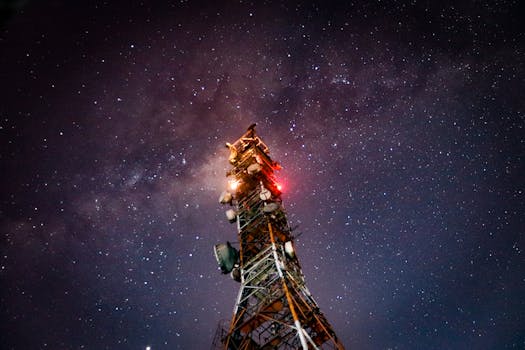
MEO Satellites: Revolutionizing Global Communication with Medium Earth Orbit Technology
MEO satellites, or Medium Earth Orbit satellites, are a type of satellite that operates in an orbit between 2,000 and 36,000 kilometers above the Earth’s surface. This orbit allows MEO satellites to provide faster and more reliable connections than traditional Geostationary Earth Orbit (GEO) satellites, which are located approximately 36,000 kilometers above the equator. In this article, we will delve into the world of MEO satellites, exploring their benefits, applications, and the impact they are having on global communication.
MEO satellites have been gaining popularity in recent years due to their ability to offer low-latency connections, which are essential for real-time applications such as video conferencing, online gaming, and voice over internet protocol (VoIP) services. The lower orbit of MEO satellites results in a significant reduction in signal latency, making them ideal for applications that require rapid data transfer. For instance, while GEO satellites have a latency of around 600-800 milliseconds, MEO satellites can achieve latency as low as 20-30 milliseconds.
Benefits of MEO Satellites
One of the primary benefits of MEO satellites is their ability to provide global coverage with a smaller number of satellites compared to Low Earth Orbit (LEO) satellites. While LEO satellites require a constellation of hundreds or even thousands of satellites to provide global coverage, MEO satellites can achieve the same level of coverage with a fraction of the number of satellites. This makes MEO satellites a more cost-effective and efficient option for satellite operators.
Another benefit of MEO satellites is their ability to provide a higher signal strength than LEO satellites. The higher altitude of MEO satellites results in a stronger signal, which is less prone to interference and attenuation. This makes MEO satellites ideal for applications that require a reliable and stable connection, such as maritime and aeronautical communications.
Applications of MEO Satellites
MEO satellites have a wide range of applications, including satellite communication, navigation, and remote sensing. One of the primary applications of MEO satellites is in the provision of broadband internet services to remote and underserved communities. MEO satellites can provide high-speed internet access to areas where traditional fiber-optic connections are not available, bridging the digital divide and promoting economic development.
MEO satellites are also used in the provision of mobile satellite services, such as voice and data communication for maritime and aeronautical applications. The high signal strength and low latency of MEO satellites make them ideal for these applications, which require a reliable and stable connection.
Challenges and Future Developments
Despite the many benefits of MEO satellites, there are several challenges associated with their development and operation. One of the primary challenges is the high cost of launching and operating MEO satellites. The launch cost of a single MEO satellite can be tens of millions of dollars, making it a significant investment for satellite operators.
Another challenge facing MEO satellites is the risk of interference from other satellites and terrestrial systems. The increasing number of satellites in orbit is resulting in a growing risk of interference, which can have a significant impact on the performance and reliability of MEO satellites. To mitigate this risk, satellite operators and regulatory bodies are working to develop new standards and regulations for the operation of MEO satellites.
In conclusion, MEO satellites are revolutionizing the way we communicate globally, offering faster and more reliable connections than traditional GEO satellites. With their high signal strength, low latency, and global coverage, MEO satellites are ideal for a wide range of applications, including satellite communication, navigation, and remote sensing. As the demand for satellite-based services continues to grow, MEO satellites are likely to play an increasingly important role in the provision of global connectivity.


